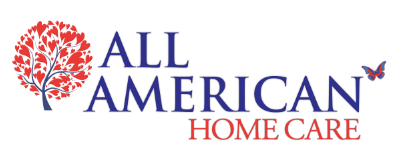
A Guide to Fall Prevention In the Elderly
August 09 2020
- A Guide to Fall Prevention In the Elderly
- Risk Factors
- Bone Mass
- Sex
- Culture
- Fall Risk Prevention
- Environmental Fall Prevention Measures
- Behavioral Fall Prevention Measures
- How to Get Up From a Fall
- If You Fall
- If You Are Assisting Someone Who Has Fallen
- Getting Help
- How to Contact Help In the Event of a Fall
A Guide to Fall Prevention In the Elderly
In the United States, the Center for Disease Control and Prevention identifies falls in older adults and among the elderly —those 65 and older— as a serious and costly health risk 20% of elderly falls lead to serious injury, from broken and fractured bones to life-threatening head injuries. Falls in the elderly are the main cause of fatal injury, and of nonfatal trauma-related hospital admissions, resulting in nearly three million annual emergency room visits.
Merely the fear of falls bears a heavy impact on our and our loved ones’ quality of life. A misguided approach to seniors’ falls prevention can lead to limited activity and social engagement, resulting in depression, social isolation, and feelings of helplessness, which only further precipitate physical decline andincrease our risk of falls.
Given that more than a fourth of older people will suffer a fall annually, it is only more troubling that an overwhelming 72% of victims of fall-related injuries (FRIs) reported their injuries when asked by medical professionals. When taking steps to help elderly parents with falls, proactive measures are essential to minimizing, even eliminating the risk of falls.
Risk Factors
There are the underlying factors — biological, even cultural— which can significantly decrease or increase an individual’s risk of fall-related injury. Bone mass, for example, is a biological factor of particular importance when discussing elderly falls. Here we’ll discuss a few of those factors:
Bone Mass
As we age, we all experience a gradual loss of bone mass. Here, yet again, a healthy lifestyle can slow this process. Among older, post-menopausal women, healthy lifestyles are of crucial importance to counteract the biological, hormonal factors that contribute to the onset of osteoporosis. In some cases, secondary prevention measures, such as drug therapy, are absolutely necessary for avoiding fractures from even minor trauma.
Sex
Studies show that women are more likely than men to suffer from falls and sustain fractures, which results intwice the number of hospitalizations and ER visits than men. Despite these findings, however, fall-related mortality (deaths resulting from falling), disproportionately affects men.
Men may be at a higher risk of death from falls due to the tendency of men to eschew medical care until or even beyond the point that a condition becomes severe, resulting in a significant delay in the prevention and management of diseases. Compounding this, men more frequently engage in intense and dangerous physical activity and risky behaviors.
Culture
Different cultures can have different expectations that affect how people view older persons and falls in older age, and even how those same older persons view themselves and the act of asking for help. Some cultures do not promote or encourage social or economic participation in older age: the perception being that the elderly are meant to retire, and “to rest.” A sentiment by the same token in many societies is that falls in older age are inevitable, unavoidable, and a natural part of aging. Culture can also aggravate the stigma of asking for help when it is needed.
Fall Risk Prevention
Broadly, fall risk prevention measures can be grouped into two categories: environmental modification and behavioral changes. An example of an environmental modification is home modification for seniors. Senior fall prevention modifications include the installation of railings and other protective devices on stairways, grab bars, handrails, and slip-resistant surfacing in the bathroom, kitchen, and other areas prone to wet floors, and proper lighting.
Behavioral changes, meanwhile, are equally key to the promotion of healthy aging and elderly fall prevention. Quitting smoking and moderate alcohol consumption, coupled with maintaining a healthy body weight and engaging in an acceptable level of physical activity, such as sports or simply walking, is integral to seniors’ falls prevention, healthy aging, and independence into old age.
Environmental Fall Prevention Measures
- Declutter — The first order of business for preventing falls is to keep your home neat and tidy. Properly store clutter, such as stacks of old newspapers, books, and magazines, particularly from hallways and staircases. Other items you should store away when decluttering your home are boxes, clothes, shoes, coffee tables, plant stands, magazine racks, etc.
- Find and Fix Tripping Hazards — Make a careful examination of each room and hallway, look out for loose carpets, slippery rugs, or wood floorboards that stick up. Repair, replace, or remove these hazards. Rugs can be secured to the floor with tacks, or double-sided tape. Another hazard to watch out for is spilled liquids or food, be sure to clean any spilled liquids, grease, or food right away.
- Install Handrails and Grab Bars — These safety devices are crucial for seniors. Falls prevention is the most essential around staircases, toilets, and bathtubs.
- Adequate Lighting — A brightly lit home with good visibility is more suitable for the elderly and helps them to avoid hidden falling hazards. Be sure stairways and narrow hallways are adequately lit, place a light switch at both ends of each stairway and hallway.
For better visibility at night, place accessible night lights in bedrooms and bathrooms, and glow-in-the-dark light switches in every room. During the daytime, glare from the sun can be disorienting, so be sure to also hang lightweight curtains over windows to reduce glare.
Lastly, store a flashlight in every room, in an easy-to-find place, in case of power outages.
- Use Non-Slip Mats — Bathtubs and showers, and wet floors in kitchens, bathrooms, and porches, are highly dangerous fall risks. For proper fall risk prevention on slick surfaces, use non-slip mats in combination with grab bars and railings. In showers, you can more effectively eliminate the risk of falls by using a bath seat.
Behavioral Fall Prevention Measures
- Avoid Loose Clothing — Baggy clothes can snag or present a tripping hazard in and of themselves and can drastically increase your risk of falling. Update your wardrobe with close-fitting clothing that doesn’t sag or drag along the ground to lower your risk of falling over yourself.
- Wear Sensible Shoes — Walking around barefoot, you run the risk of slipping on slick surfaces and spilled liquid, worse by wearing only socks, you increase your risk of slipping on any surface. An easy way to practice falls prevention at home would be to wear a pair of comfortable, sturdy shoes. If any pair of shoes would be too uncomfortable, another option would be non-slip socks that have grips on the soles of the feet.
Not all shoes provide the same degree of fall prevention; high heels, flip-flops, and shoes with slick, smooth soles are likely to lead to a fall.
- Don’t Move Too Quickly — Even younger people can experience momentary blackouts and dizziness from sitting or standing up too quickly. To prevent disorientation-induced falls of this sort, all you have to do is take a brief pause as you rise from lying down and as you rise from sitting. Pause before, and take your time when moving up and down stairs.
- Visit Your Doctor — Consult your doctor regularly to review your medications; certain medicines lead to fatigue and dizziness, which increase the risk of falling. Endeavor to be open with your doctor about any history of falling. Get routine checkups on your vision and hearing. All American Home Care’s 24/7 Home Care health service allows seniors to stay in the solace of their own homes while accepting extra care either after a stay in a medicinal facility or to avoid hospitalization.
Home health services are a suitable choice for you or your friends and family who may have issues with mobility, experience the chronic effects of ceaseless diseases, or even need a companion and intermittent help.
- Exercise Moderately — The right types of physical activity can have a huge positive impact on fall risk prevention. Ask your doctor if they can recommend any senior-friendly exercises. Some activities to consider are walking, water aerobics, or even tai chi. Regularly and moderately engaging in activities like these can improve strength, balance, coordination, and flexibility to reduce the risk and effects of falls.
On the other hand, if you prefer to avoid physical activity to reduce your risk of falls, tell your doctor. Your doctor may be able to recommend a more carefully designed exercise program for you or refer you to a physical therapist.
How to Get Up From a Fall
Outside our control, and despite our most carefully laid plans and best intentions, accidents can and do happen. If you experience a fall or if you are assisting a person who has experienced a fall, follow these steps carefully:
If You Fall
- Do your best to remain calm and collected.
- Refrain from making any overly strenuous or sudden movements.
- Stay down while you assess your condition:
- Do you think you can move or stand?
- Do you feel pain if you try?
If you think you can get up, follow these next steps:
- Lay on your side. Bend your top leg forward and with your elbow, prop your upper body into a resting position.
- With your elbow, pull yourself toward a sturdy stationary object. Using the stationary object, pull yourself up with your arms to drag yourself into a kneeling position.
- While still holding the stationary object, place your strong leg in front of your body.
- Stand up.
- If you are immediately near a chair, turn, and sit down.
- Call for medical assistance.
If you cannot get up, follow the steps below.
- If you are alone but think you will be heard, call out for medical assistance.
- In case no help immediately arrives, call for assistance using your cell phone if you have it on hand and if you can reach it without straining or further injuring yourself.
- If you have a fall prevention lanyard, take it out to serve as identification if you can reach it without straining or further injuring yourself.
- If you cannot access your cell phone, attempt to slide yourself to the nearest phone or bench if you can do so without further injuring yourself.
- Yell, shout, call out, and otherwise make as much noise as you can to draw attention to your situation. Use your walking implement if you need to.
- Maneuver yourself into a comfortable, safe position and wait for help. Make sure to protect your joints.
If You Are Assisting Someone Who Has Fallen
If the person who has fallen can get up, help that person by bringing a chair. Help the person achieve the positioning mentioned above in the section entitled, “If You Fall.”
If the person who has fallen cannot get up, call for medical assistance first, if necessary, and then administer first aid without moving them. If you do not know first aid, make sure the person is as comfortable as possible until professional medical assistance arrives. Pay special attention to the joints.
Getting Help
Whether you have fallen or are helping someone who has, you must never assume that just because there are no obvious, readily apparent side effects that there are none.
Be vigilant and alert for any of the following symptoms following a fall and call a doctor immediately: lingering pain, loss of consciousness, dizziness, nausea, drowsiness, headache, weakness, vision problems, or any visually apparent injury such as cuts or bruises. The onset of these symptoms may be within the days after a fall or immediately afterward. Immediately call a doctor in either situation.
How to Contact Help In the Event of a Fall
Elderly adults should keep a cellphone on their person, at all times, in an easily accessible place. Securing a cellphone on a lanyard is a great way to ensure that even after a fall, the cellphone will still be easily accessible.
An even better, automatic option is an emergency fall device. These devices automatically notify and summon professional medical care immediately upon detecting the person wearing them has fallen. In-home care is also an option. At All American Home Care, our expert caregivers can provide 24/7 in-home service and help you protect yourself against falls.





